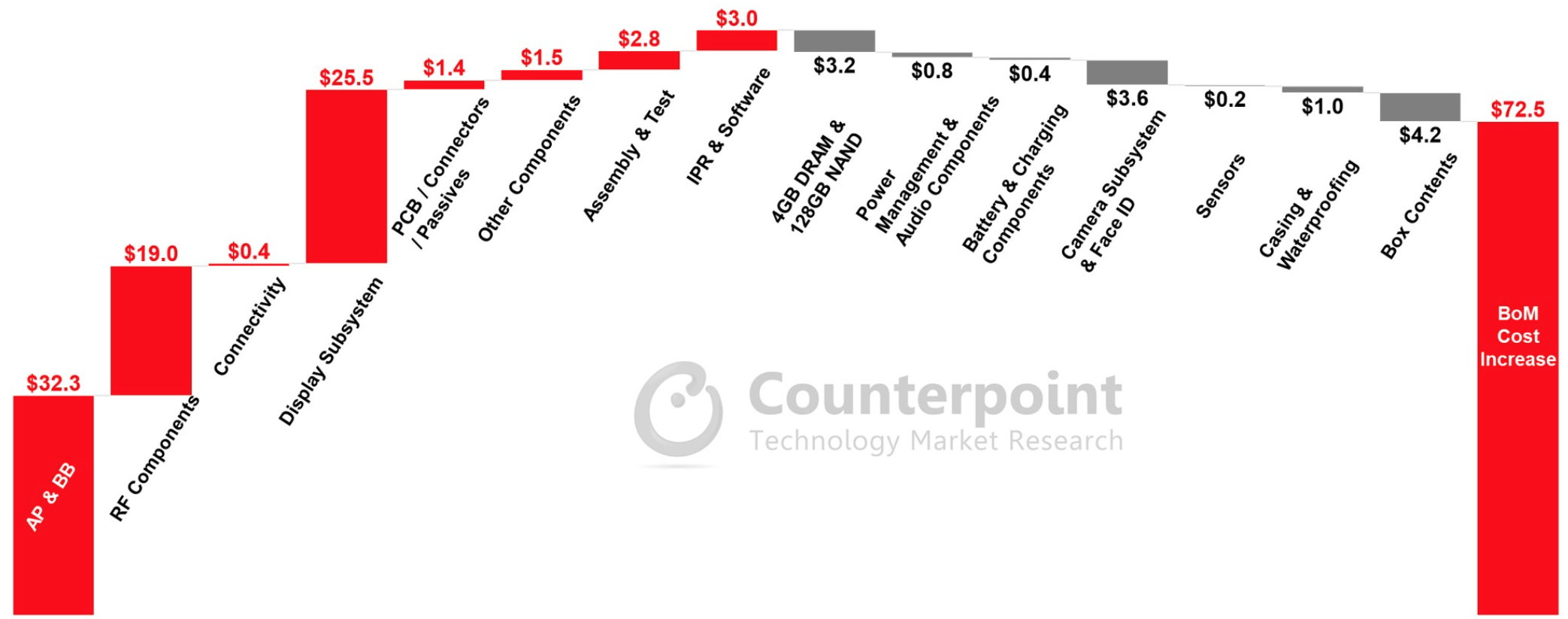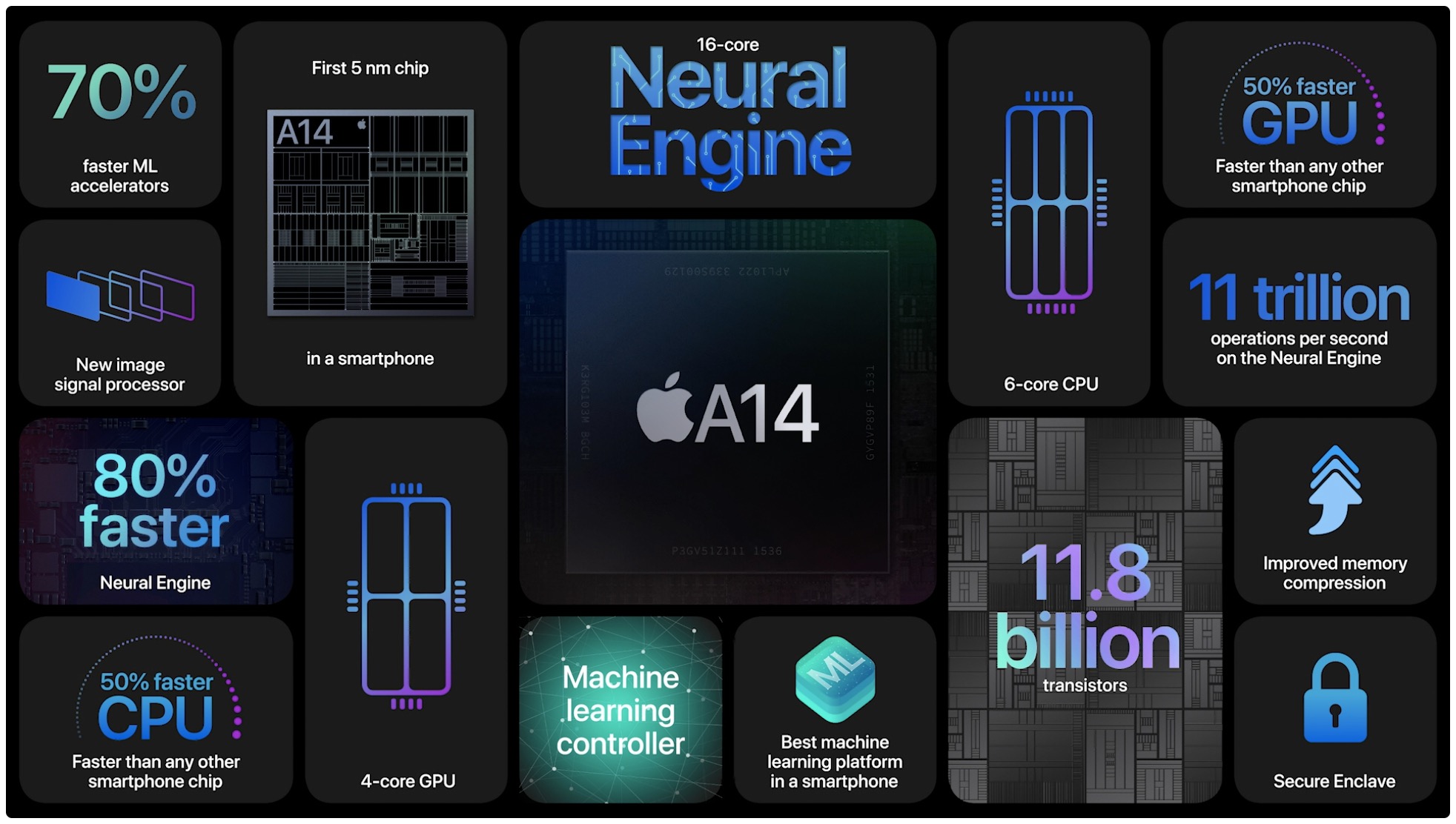According to a bill of materials analysis conducted by research firm Counterpoint, Apple’s latest iPhone 12 costs the company 21 percent more than an equivalent iPhone 11, or nearly a one-fifth difference in terms of components cost between this and last year’s models.
The iPhone 12 bill of materials
According to the analysis, that’s because the latest iPhones use more premium materials and incorporate costly new hardware features, such as 5G networking. For instance, shifting the iPhone 12 lineup from a mix of OLED and LCD models to an all-OLED lineup has resulted in an over $23 cost increase because OLEDs are several times more expensive to build than LCDs. The figures include components, manufacturing and assembly costs while excluding costs related to research and development, shipping, marketing, sales, licensing and so forth.
Costly 5G parts
5G connectivity is the biggest contributor to the cost increase.

Counterpoint has analyzed that a 128-gigabyte edition of the iPhone 12 with both sub-6GHz and mmWave support (meaning only the US models) costs Apple 26 percent higher at $431 than last year’s iPhone 11. The iPhone 12 models for international markets (without mmWave support) cost Apple 18 percent higher to build than the iPhone 11, the research firm has it.
Assuming a 38 percent mmWave mix, the blended materials cost for the iPhone 12 with 128GB NAND flash is nearly $415, a 21 percent increase over its predecessor. Application processor, 5G baseband, display and 5G RF components represent the major areas of the cost increase.
The new Apple A14 Bionic chip costs Apple a whopping $17 per unit, a notable cost increase, due to the much higher per-unit cost of a five-nanometer wafer (the chip is fabbed on TSMC’s five-nanometre process technology). Apple’s self-designed components like the A14, PMIC, Audio and Ultra Wide Band chip make up over 16.7 percent of the overall bill of materials cost.

Apple squeezing its suppliers
To make up for the cost increase and the fact that it’s selling 256/512GB versions of the iPhone 12 Pro/Max for $50 less, Apple is said to have demanded even better deals from its suppliers. MacRumors has a good comment regarding that, writing that Apple may have put a pricing squeeze on component suppliers in order to help offset increased costs for the new 5G technology and minimize the need for end-user price increases.
A cheaper logic board for the iPhone 13
Apple analyst Ming-Chi Kuo has alleged that this year’s iPhone 13 models will feature a more affordable soft board design believed to reduce the handset’s board price by an additional 30–40 percent. Made using a material known as liquid crystal polymer, the soft board is a flexible way to connect components together and work around the restrictions of inflexible printed circuit boards. Kuo’s predicted that Apple will launch 5G-supporting iPads in 2021.